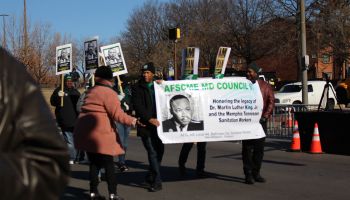A microscope has returned to New Orleans – the city forever changed ten years ago by the devastation of Hurricane Katrina.
The category five hurricane began on Aug. 23, 2005 on its way towards Florida and strengthened on its second landfall in southeast Louisiana on Aug. 29. Eighty percent of New Orleans was submerged as distraught citizens were seen on live TV pleading for assistance. Approximately 1,833 people died and hundreds of thousands were left without their homes, clothes, family heirlooms, and more.
The government and former President George Bush was heavily criticized for a slow approach to helping victims of the tragedy. The Federal Emergency Management Agency, or FEMA, arrived in New Orleans days after the hurricane had already wreaked havoc.
Lives were also lost at the chaotic Mercedes-Benz Superdome, where many found refuge during the storm.
The broken levees forced 30,000 people into the dome, and many died from exhaustion. The images plastered across our television screens in 2005 painted a desperate portrait of the victims, but also shed light on an economically broken city and exposed the U.S. government’s lackadaisical response to the plight of its very own citizens.
Take a look at 25 photos that defined the pain, strength, and endurance of the people of New Orleans in the gallery below.
SOURCE: New York Times, National Geographic, Data Center Research | PHOTO CREDIT: Twitter
SEE ALSO:
TOWN HALL LIVESTREAM Aug. 26: Where Are NOLA’s Schools, 10 Years After Katrina?
Ten Years After Katrina: Soledad O’Brien Recounts The Devastation In New Orleans
Don’t Miss Our Hottest Stories! Get The NewsOne Flip App for iPhone: Flip, Skip — Or Send Us a Tip!
25 Powerful Images That Encapsulate The Devastation In New Orleans Post-Hurricane Katrina was originally published on newsone.com

















